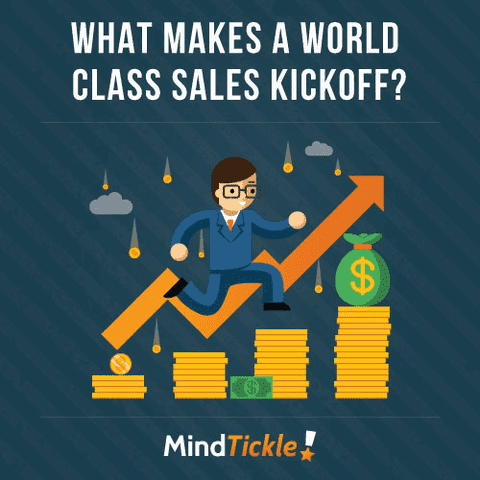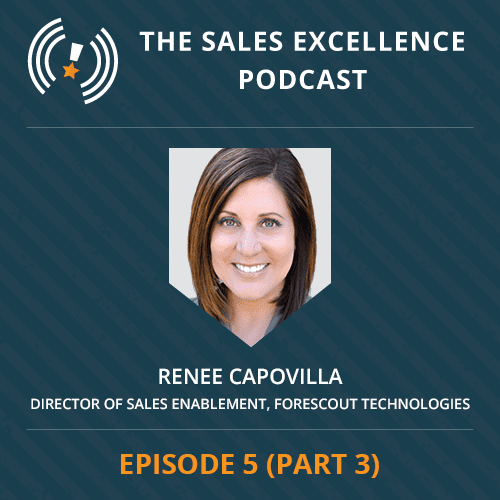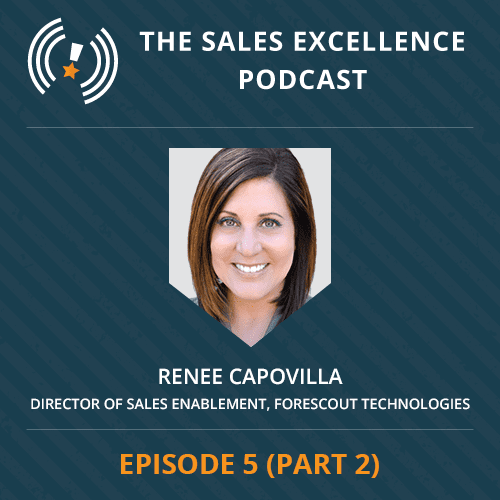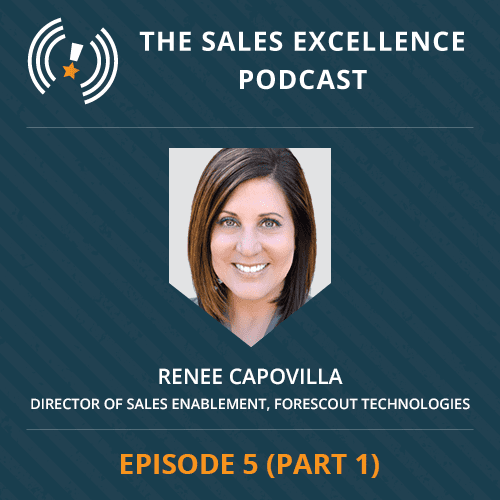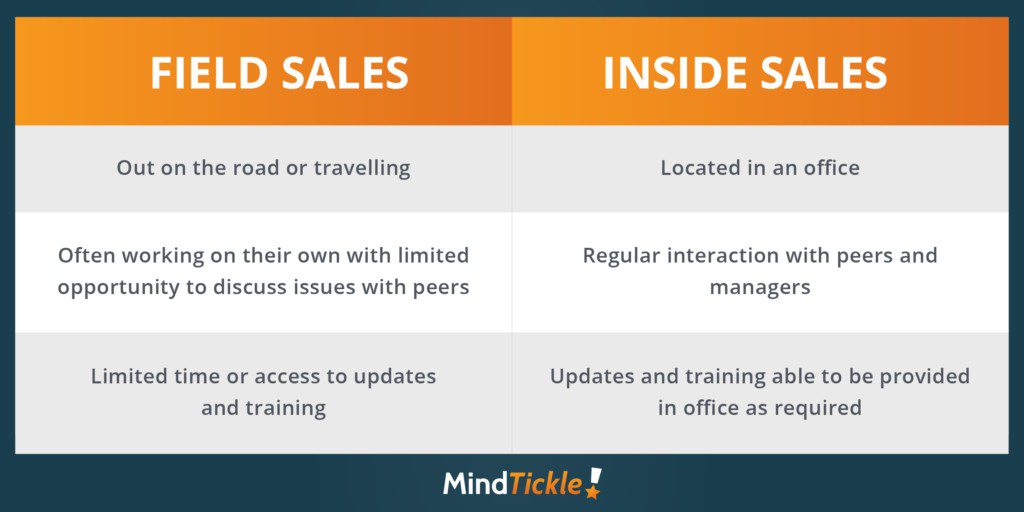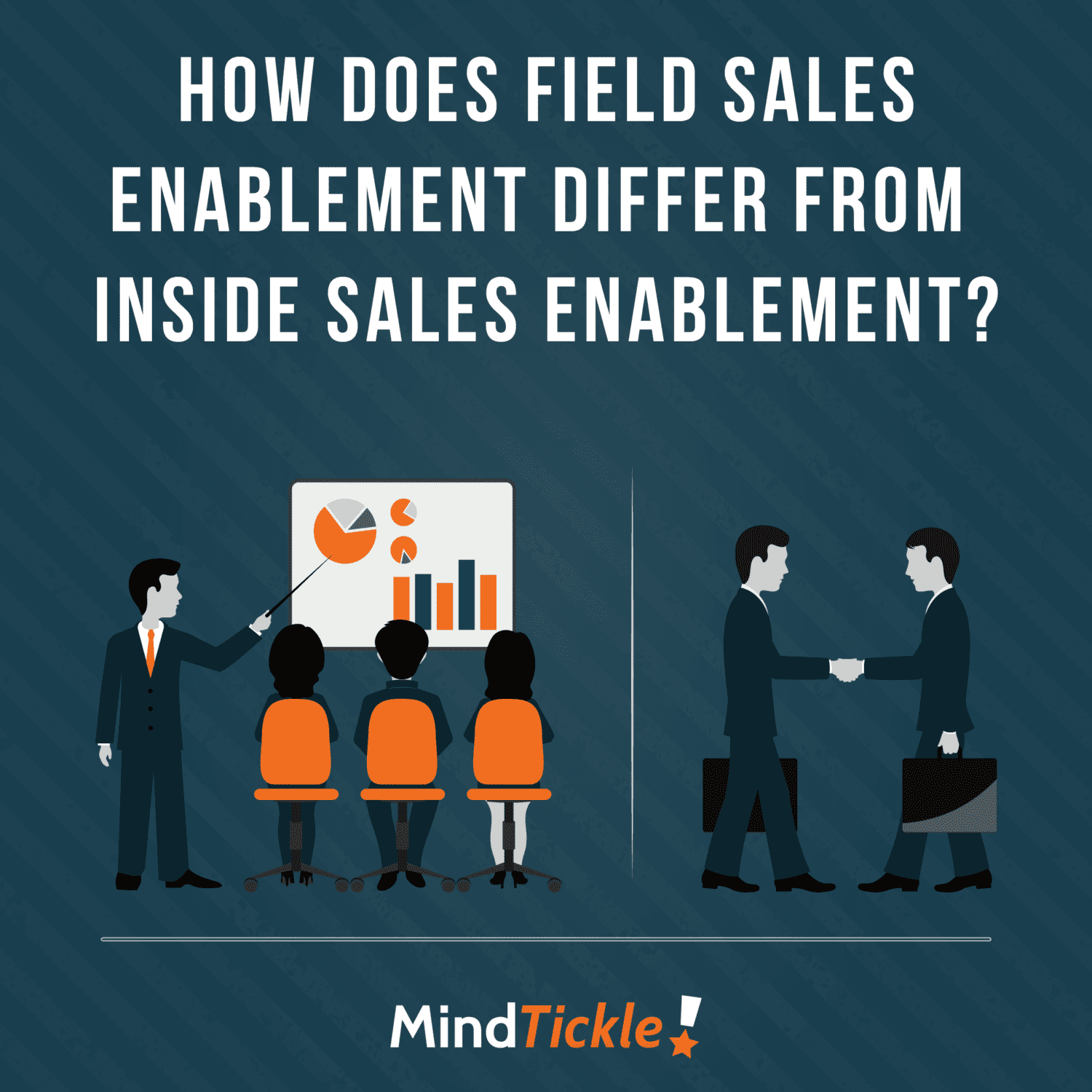In Conversation with Cloudera on Sales Enablement
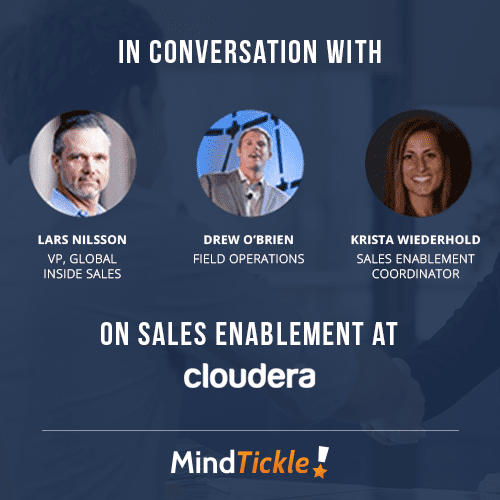

here
.
Cloudera is an open-source data management and analytics platform. Cloudera has enterprise customers in every vertical market including financial services, public sector, telecommunications, retail, and healthcare. The company has been scaling rapidly, and in just three years has grown its sales operations from a team of 11 reps based in North America to almost 200 reps globally. Supporting the sellers is an additional team of over 150 sales engineers, solution architects, business development and customer-facing staff.
As Cloudera’s sales team was growing rapidly it was experiencing several challenges that fell into two broad categories:
Consistent Messaging
With so many sales reps, one of Cloudera’s biggest challenges was conveying their message consistently and efficiently. This was compounded by market and product issues, as Drew O’Brien, Field Operations noted,
“
Cloudera is in a market that’s changing very rapidly on so many different levels. The market right now is very, very hyped and as a result, you have all these different companies entering the market. They all have mixed and often conflicting messages, so how do you come up with something that resonates and cuts through the noise. Because we deal in open-source technology, the product changes rapidly because it’s developed by a worldwide pool of developers from all different walks of life, so things change very fast on that front. Now you add on top of all that rapid hiring, it’s extremely challenging to be crisp and clear.”
Onboarding
While Cloudera had a basic onboarding program in place, like many companies, they relied heavily on marketing to undertake many of their sales enablement activities. As the team grew it became apparent they needed a structured process to onboard sales reps to be as productive faster.
Sales enablement investment
Cloudera has invested heavily in sales enablement resources and put together a formidable team. This made all the difference according to O’Brien,
“
Investing in it [sales enablement] early, making that investment in the supporting infrastructure for our sales people while building a foundation rather than after we’ve built the house already was something that we did earlier than most companies do and it saved on a lot of things for us. Secondly actually building formal infrastructure and not relying on marketing and random half-hearted webinars and weekly web access at the end of our training.”
To help create their value proposition Cloudera put together a cross-functional team of sales and marketing leaders and business development individuals over a three-week process. Lars Nilsson, VP Global Inside Sales explains, “
Together we came up with an entire kind of value framework for how do we talk about what it is we do, the problems that we solve, and companies in different segments, whether they be different revenue segments or different industry, verticals or different geographies.”
“
If you involve all of those parties in the development process, in the creation process, they feel like, in many ways, they’re part-owner of it. And for sales teams, driving an option is a matter of getting it started and then, if you can show success and you can actually demonstrate that this indeed does make their lives easier and helps them be more effective, then it kind of begins to gain its own momentum. Because we involved marketing and product management and all those different account executives in the process, it became much easier for them to understand what it was we were doing,”
clarified O’Brien.
Following this process the business then developed assets and content in various different forms, that was disseminated and communicated so that alignment could occur. The alignment resulted in a common message that everyone in the sales team could use when talking about the business, its products and value.
Cloudera leveraged Mindtickle to elevate the readiness of their field sales team and provide them with the right information at the right time. “
You can’t have a field sales team be effective if you’re trying to give every little piece of information to them and have a rep know absolutely every little thing about your products and market. The exercise of readiness is acting like a filter, distilling what’s really important from a selling perspective. What do reps really need to know, and make sure they know that and nothing more. If they need more than that, they can learn it as they need it or they can call another resource. That’s why you have systems engineers, professional services people and product managers so that when the time is right, you can bring in additional resources to help you out. So involving everybody in the process just helps solidify the mission, the goal, everybody’s on the same page, and for us, it’s been very, very effective so far,
” explains O’Brien.
More effective onboarding
While Cloudera already had a sales onboarding class in place they identified a need to make it more robust for their new hires. Krista Wiederhold, Sales Enablement Coordinator explains, “
We looked at
ways of improving it to be more effective, making it more engaging and role-based, moving a lot of the lecture to the first 30 days. So for us, we were kind of just grabbing what we already had in place, and making it better.”
Being able to leverage technology was key to taking their onboarding program to a new level. Cloudera uses Mindtickle to prepare their reps for boot camp Nilsson explains, “
Because we have offloaded or off-boarded a lot of the content that our sales reps usually get during that week of onboarding training, we bring in people from all over the world to our corporate headquarters for this week-long onboarding. We have put 3 days of content into the pre-work in the form of videos and on-demand instructor-led video content, so when they come to Palo Alto we have a lot more time to do role plays, live presentations, and whiteboard, where they learn the content and retain it. For me that was a huge value add-in, just taking all the content you have and allowing your reps to consume it before they come.”
“Using Mindtickle we get feedback from employees, specifically there are ways to do polls and collect feedback in terms of what content’s helpful, what they need to learn next, so that’s the way we gather information from the field to test its effectiveness. Within the system, we also pull analytics and other metrics we can use to see how effective the enablement efforts we’re putting forward are working,”
continues Wiederhold. “
We can see how fast a rep is coming up to speed on particular topics. Being able to look back at the courses that they completed, exams we ran in Mindtickle or to really test them for the areas that they may need a little bit more help on. So we really look at it to get more insight into how we’re revving them up or how fast it takes them to close a deal, get their first meeting or assess them on areas of our product that they may need more education on. We look at the course analytics as well as how long it takes them to close a deal or land a meeting.”
Achieving objectives
The technology was key to Cloudera’s solution according to O’Brien, “
Invest in technology, like Mindtickle or something like that, to actually structure your programs and enablement practices in an organized way and that just methodically covers everything that you need to cover.”
Using a technology that can perform multiple functions in the process certainly made the process easier for the sales enablement team according to Wiederhold,
“Investing in systems that are going to help you accomplish and teach the field and make it easier for to meet them where they’re at. Also pick a tool that’s going to have integrations from a learner perspective, and that you can modify and make it a lot easier to consume materials. We personally use Mindtickle for onboarding as well as ongoing enablement.”
Technology has also played an important role in reporting and analytics for Cloudera. Mindtickle has enabled the sales enablement team to look at what their reps are doing, what courses they are watching and then reporting back to management on this.
“
When you see these reports, and they stack rank in the different regions, and the different segments by how many of their reps have completed versus started versus not started. That sends the message loud and clear to the field and everyone who has a stake. If you are a manager and you see yours at the bottom of the stack with respect to your reps learning one of our key new values drivers, then we’re providing a tool for our leaders to manage their teams. They can then go ahead and make sure their reps get the training,” continues Nilsson.
A final area where technology can really be leveraged is in certifying and testing reps. “
Most recently we’re rolling out certifications. We’re building courses on a particular topic and certifying the field on that course with an exam, or making them do a pitch presentation,”
explains O’Brien.
Results
“
Now we have a common framework and a common set of messages that 200 individual contributor sellers and the extended teams of sales engineers, solution architects, business development, inside sales, we’re all singing kind off the same hymn sheet, when it comes to who we are, what we do, and the problems we solve and the stories we tell,”
exclaims Nilsson.
“So when we’re out there, inspiring and teaching, it all sounds the same, from the CEO down to one of my SDRs. Today there’s a lot of excitement globally, just to be able to share stories because we’ve all have common terminology, language, and value drivers. It’s actually a wonderful place to be. Took us a while to get here, but now we feel poised as this very fast moving company that wants to continue to do that. We have a lot of hopes and dreams here at Cloudera and we definitely feel poised to be able to do that with all the things that we’ve invested in and around sales.”


